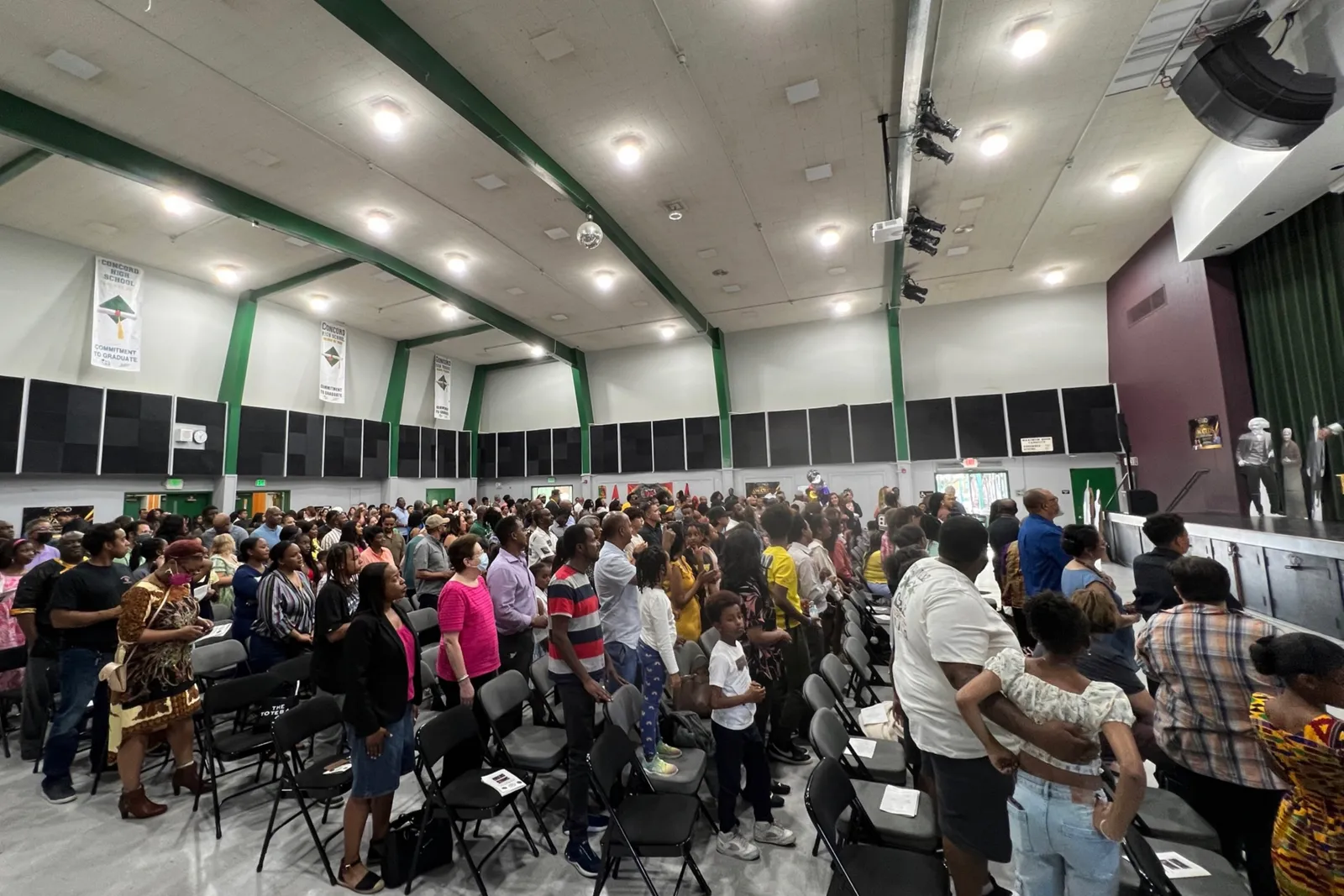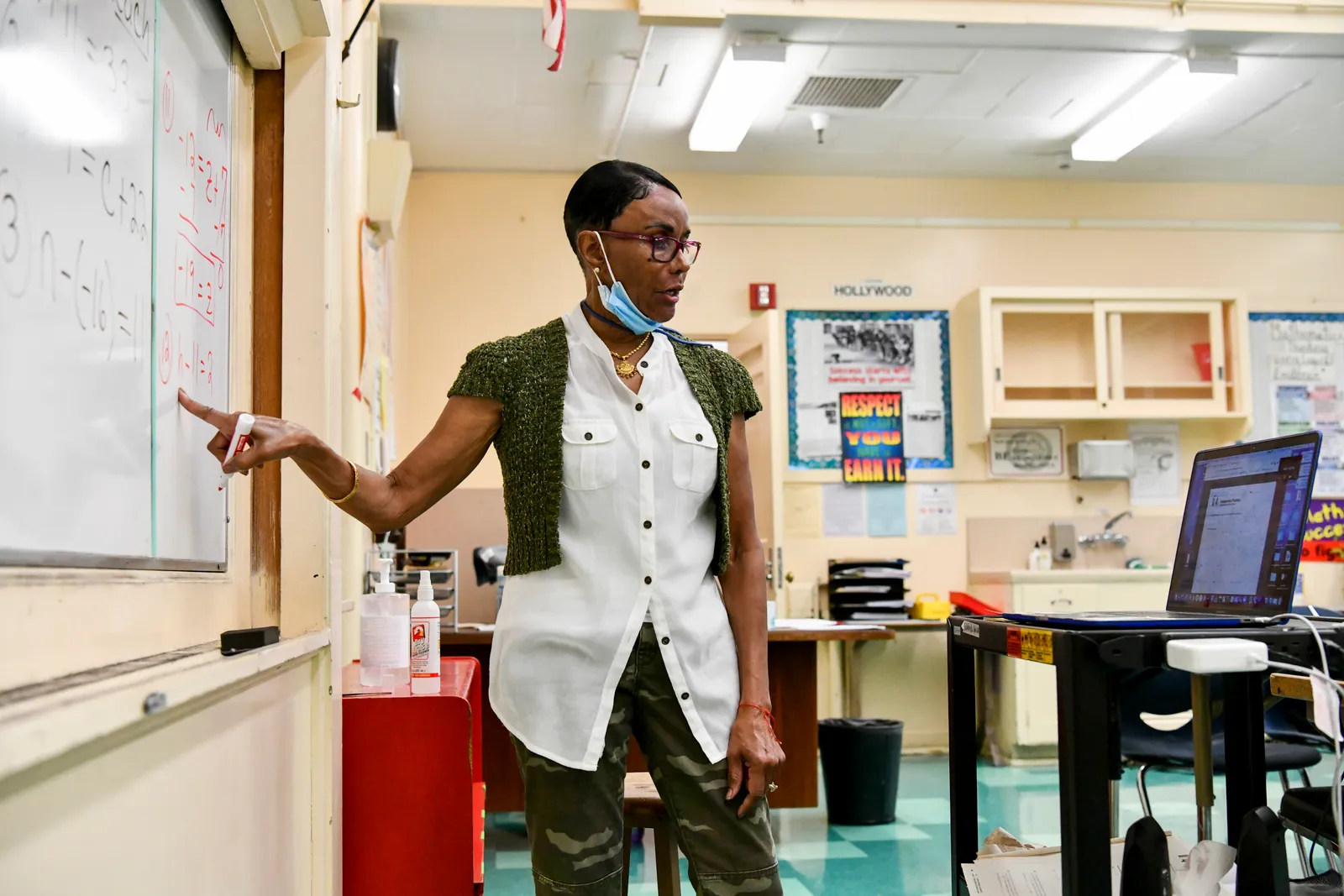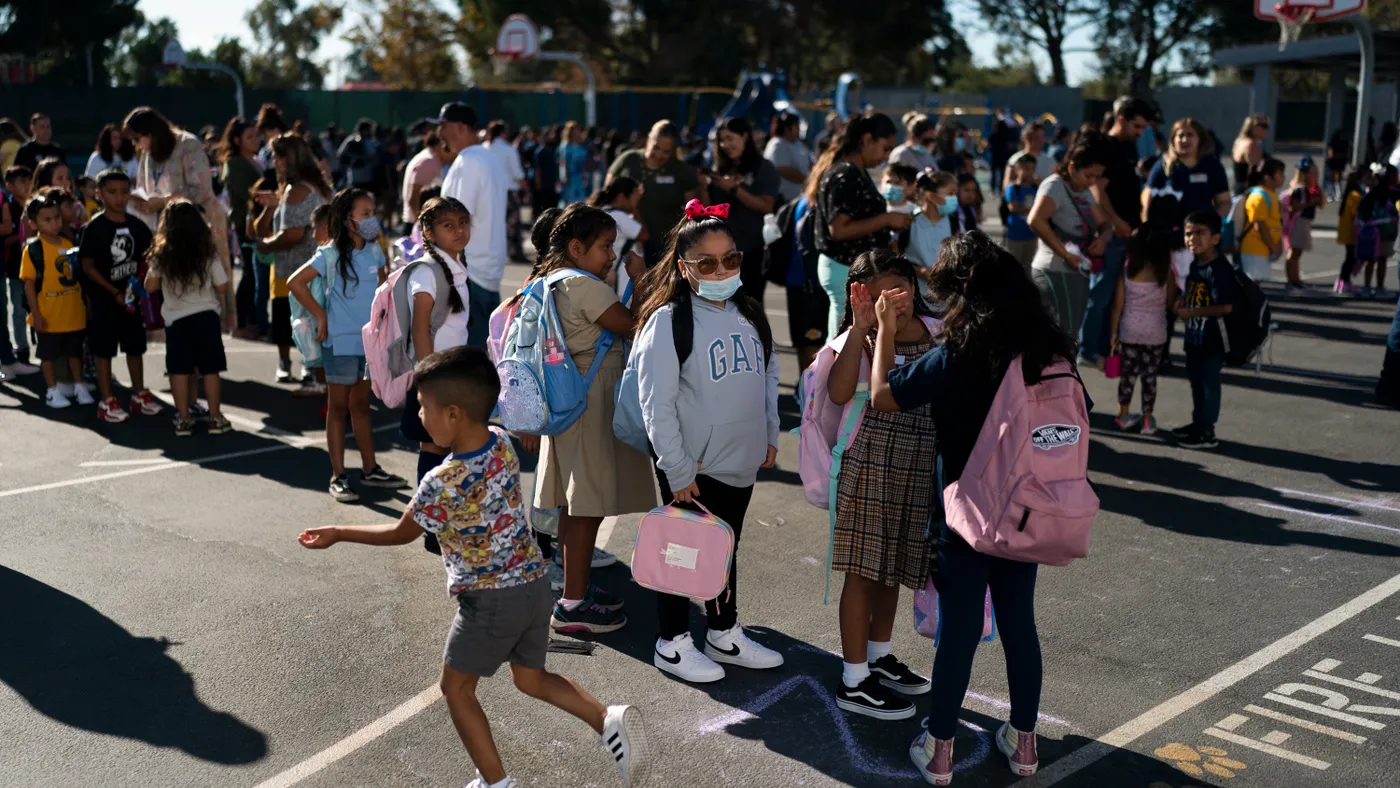This is part two of a two-part series. To view part one click here.
When Mt. Diablo Unified School District was identified in 2021 as having an overrepresentation of Black students with intellectual disabilities, some 29,000 students attended the California district near Oakland. Only 23 were Black students with intellectual disabilities.
Wendi Aghily, chief of pupil services and special education for the district, said school system leaders quickly went into action. They communicated to the community that even though this significant disproportionate identification tied to an overrepresentation of less than 1% of students, it would thoroughly examine policies and practices for potential changes districtwide.
Data shows that for the 2020-21 school year, Black students made up 3.1% of the district's total population — but 8.9% of all students identified with an intellectual disability.
"It had to be the tone from the superintendent all the way to every single person involved. It's not about a plan. It's about a process, and it's about the process and outcomes for kids," Aghily said.
The district, located in Contra Costa County, took steps to identify the root causes of the disproportionality, finding evidence of systemic racism and cultural dissonance, a lack of authentic partnerships with parents and families, and inconsistent implementation of discipline, among other contributors.
And just as the district was working to address the inequities, the state identified the district for a second year in a row with an overrepresentation of Black students with intellectual disabilities.
Some of the remedies the district implemented over the two identification periods, using a required set-aside of $2.4 million from the federal Individuals with Disabilities Education Act grant, included:
- Reviewing how it was identifying students with intellectual disabilities, as well as how special education referrals in general were being made.
- Fine-tuning its manual for the student success teams that monitor student progress and help teachers develop interventions for general education students who are struggling academically and behaviorally.
- Hiring a full-time parent coordinator for Black parents.
- Implementing targeted supports for students with attendance challenges and those struggling with peer interactions.
At the same time these and additional efforts were underway, the district emphasized to staff the importance of identifying and serving students who needed special education supports. "You don't just stop identifying kids in order to get out of the status" of being identified as significantly disproportionate, Aghily said. "This should never be about taking away things from children if they require it."
Though the district was not identified for significant disproportionality for the 2022-23 school year, it will continue its initiatives to reduce disparities and measure those outcomes. And while Aghily is proud of the school community's transparency and hard work, she noted challenges that impacted efforts, including that schools were dealing with a pandemic.
The urgency of responding to COVID-19 needs while focusing on disproportionality initiatives became overwhelming for school staffs and administrators. In most cases, educators were struggling to adapt to virtual learning and pandemic protocols, let alone having to deal with additional responsibilities.
If she could do the past two years over, Aghily said, she would have had the district better align the new initiatives with district COVID-19 response operations — rather than make significant disproportionality improvements a separate area of focus.

Investigating inequities
At the same time the pandemic began disrupting instruction in spring 2020, the killings of George Floyd, a Black man, and Breonna Taylor, a Black woman, drove school districts to investigate racial inequities in their education systems, including in special education, said María Hernández, deputy executive director of school change and community engagement and co-director of the Innovations in Equity and Systemic Change at New York University’s Metropolitan Center for Research on Equity and the Transformation of Schools.
Their killings have "propelled our school districts" to engage in the work to reduce disproportionality, said Hernández, who works with New York school districts on reducing racial inequities. "It's complicated but they want to be able to make those commitments to fundamentally do the work," she said.
But while some districts are eager to investigate biases and inequities, others are hesitant for fear they will draw criticism from opponents of diversity, equity and inclusion efforts. Controversial legislation in several states restrict teaching on race and racism, and this is having a negative spillover effect on some districts’ approaches to remedying racial inequities, administrators and advocates have said.
The board of directors of the National Association of State Directors of Special Education declined to speak to K-12 Dive regarding challenges and best practices for measuring significant disproportionality, citing the association's difficulty in providing a unified message because the topic is so politically sensitive in many of its member states.
The increase of significant disproportionality in California
Assistance from the state
California is an example of a state that is not shying away from the discussion. It also had an alarming increase in the number of districts identified as significantly disproportionate.
In 2019-20, 11 districts were identified. A year later, there were 131 districts, or about 9% of the state's 1,482 districts, marked as significantly disproportionate, according to federal data.
California data shows that in 2021-22, the number dropped, to 109 districts.
We've made quite clear that no matter what the issue is or how districts become significantly disproportionate, we really have sort of doubled down, if you will, in terms of assisting and supporting those LEAs.

Heather Calomese
Former California state director of special education
The reasons for the identifications are varied. For instance, Torrance Unified School District was identified for significant disproportionality for White students with emotional disturbance. In Los Angeles Unified School District, it was for African American students disciplined fewer than 10 days for out-of-school suspensions, as well as for African American students with emotional disturbance. In El Monte City School District, it was Hispanic students with a specific learning disability.
Each district "at the local level is dealing with something entirely different than folks across the state," said Heather Calomese, former California director of special education, who spoke to K-12 Dive in May before leaving the department to become chief policy and advocacy officer at nonprofit EdVoice, which advocates for children from low-income families.
"We've made quite clear that no matter what the issue is or how districts become significantly disproportionate, we really have sort of doubled down, if you will, in terms of assisting and supporting those LEAs," Calomese said.
To help districts hone in on the root causes of significant disproportionality, the state created a technical assistance center referred to as State Performance Plan Technical Assistance Project, or SPP-TAP. The program offers a menu of services including trainings and resources, as well as 10 hours of free consulting with facilitators who provide individualized assistance to districts.
A key factor of this work involves encouraging districts to have honest conversations in their communities about the reasons for the disproportionality — an action some are hesitant to take.
Maureen Burness, a former district special education director and commissioner to the state advisory commission on special education, works with districts as a SPP-TAP facilitator. Burness gives credit to the California Department of Education for proactively working with districts that are both at risk of being identified or already identified with significant disproportionality.
She said that while every district has a unique need, one of the most common remedies for improving disproportionality is professional development in instructional and behavioral practices. And, she added, one of the biggest challenges is personnel turnover. When there are staffing disruptions, it can be hard to keep up momentum for remedies, Burness said.

Federal involvement
A recent report by the U.S. Department of Education's Office of Inspector General found that over the last six years, the Education Department provided general guidance and technical assistance to states in implementing significant disproportionality. The department also monitored states' compliance. OIG's main recommendation was that the department assess the risks around data quality to reduce inaccurate or unreliable data.
To address data quality for significant disproportionality, the U.S. Department of Education is creating a new technical assistance center to help states collect, report, analyze and use data about racial disparities in special education.
A proposal for the center, published in the Federal Register in March, garnered 20 comments of varied reactions. A few state education agencies said a new center would be redundant given the federal technical assistance centers that already focus on data collection in special education.
Others voiced support but made a variety of recommendations. Those included suggestions that the proposed center work in alignment with parents and that the Education Department add to the required data collection IDEA-related information on threat assessments, students with disabilities who only have Section 504 accommodations, referrals to law enforcement and more.
On July 26, the Education Department announced it was accepting applications to manage the center, which is estimated to have a $14.5 million, five-year budget.

No quick fix
California, through SPP-TAP, is trying to share best practices among districts. One essential element, Calomese and others say, is having the collective involvement of the superintendent, school board, school administrators, teachers and parents.
Superintendent and school board participation signal to others that racial disproportionality in special education is not just a special education concern — it's a districtwide and general education concern, Calomese said. This also helps everyone in the district get on the same page regarding changes in policy and procedures.
We have to stop blaming students and their families for these continual mishaps when the system continues to keep significant disproportionality going.

Alexandria Harvey
Senior program associate in special education policy and practice for the WestEd-led National Center for Systemic Improvement
What doesn't work well is when district leaders try to rush to find solutions without first understanding the causes.
"Folks oftentimes come to this work and say, 'Well, I just want to get out. I want to get out. I don't want to be significantly disproportionate,'" Calomese said. "If the end game is getting out … we haven't done our job in ensuring that we are equipping and empowering districts to implement systems that are fair and equitable in their district."
"Change does take a while if you want it to be meaningful," she said.
Alexandria Harvey, senior program associate in special education policy and practice for the WestEd-led National Center for Systemic Improvement, said embedding and implementing culturally responsive practices take time.
"We have to stop blaming students and their families for these continual mishaps when the system continues to keep significant disproportionality going. So it's really the shifting of mindsets and understanding why is significant disproportionality still happening," Harvey said.
She said that while addressing disparities in special education is a work in progress, she's pleased with the movement toward positive change.
"The field is continually improving our methodologies and our ability to be able to coach districts and states to really address and hopefully end disproportionality," Harvey said. "I would say the needle is beginning to move, and I'm so optimistic for the future."







